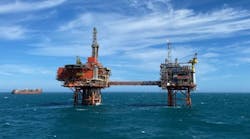Offshore staff
OSLO, Norway – Norwegian operators are paying more attention to the condition of their temporarily abandoned offshore wells, according to Petroleum Safety Authority (PSA) Norway.
PSA identified 193 such wells on the Norwegian shelf, some in a poor condition, leading it to urge the eight operators responsible to take action because of the potential safety risk.
Some of these disused wells have remained that way for three or four decades, in the oldest case since 1970. Most will never be reused, but for various reasons, PSA says, the owners have not prioritized permanent plugging.
PSA initiated a project last year to analyze each of the wells. Monica Ovesen, discipline manager for drilling and well technology at the PSA, said: “We asked [the operators] for an overview of all wells which were neither active (as producer or injector) nor permanently plugged, and of their condition. The answers we got proved a surprise.
“When we reviewed the data submitted together with consultants from Sintef and Wellbarrier, we concluded that 62% of the wells fell into the ‘green’ category. This means they have double barriers which are intact.” A further 29% were classified as ‘yellow’ – acceptably safe under specified conditions.
However, 1% of the wells were in the ‘red’ category and 8% ‘orange’, both cases unacceptable in safety terms.
Last fall, PSA asked the eight operators to present binding plans for plugging the wells. All the wells in the most serious categories are now either plugged or covered by a scheduled plan to do so, and work has started to ensure the integrity of the remaining wells.
“However, permanent plugging is a matter of getting things to fall into place,” Ovesen admits. “We must also take account of the operators’ rig capacity.
“A regulatory requirement could be necessary to avoid ending up with a similar accumulation of temporarily abandoned wells in a few years’ time,” she added.
2/17/2012




